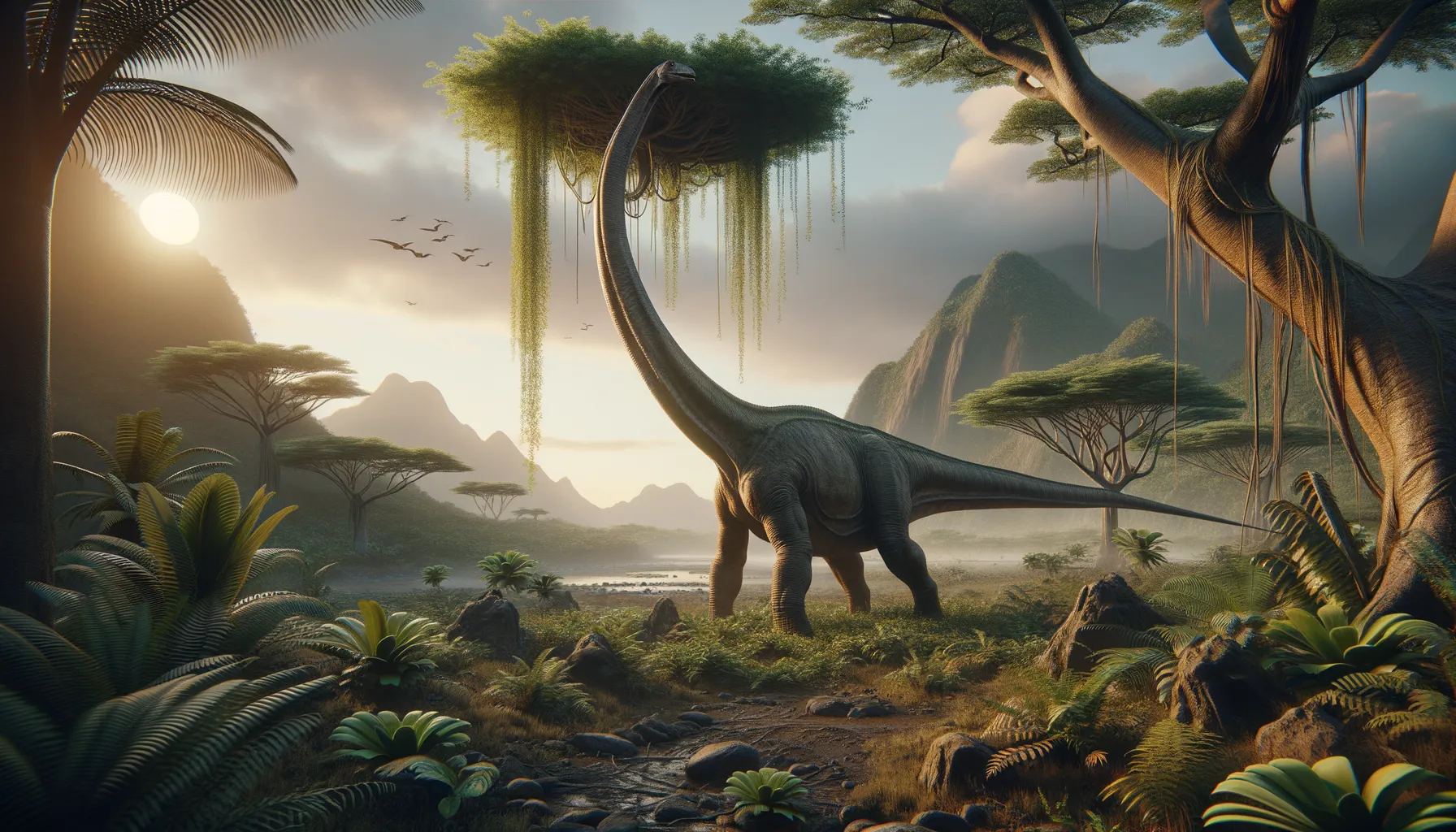
Mamenchisaurus
The titanic vegetarian with a colossal neck.
Period
Jurassic
Length
Could reach up to 26 meters in length.
Height
Around 10 meters tall.
Weight
Approximately 25 to 30 tonnes.
Mamenchisaurus was a gigantic, long-necked dinosaur that roamed the Earth during the Jurassic period. Known for its incredibly long necks, these sauropods primarily inhabited what is now Asia. They were herbivores, feeding on a variety of plant materials high above the ground. Mamenchisaurus represents one of the longest-necked creatures to have ever lived, demonstrating an extraordinary adaptation for accessing leafy canopies.
Diet
Mamenchisaurus was a herbivore that browsed on soft leaves, ferns, and conifers. Its long neck allowed it to reach high into the trees to access food that other herbivores could not.
Hunting
As a plant-eater, Mamenchisaurus did not hunt. It spent its time browsing for vegetation across vast areas, relying on its size for defense.
Environmental challenges
Mamenchisaurus faced environmental challenges such as finding enough food to sustain its massive body. The competition for resources with other herbivores could have been intense, especially during dry seasons when vegetation was scarce. Its large size also required vast spaces for movement and food intake, meaning habitat loss could have been a serious threat.
Speed
It moved slowly due to its massive size.
Lifespan
Estimated to have lived up to 100 years.
First discovery
Discovered in Sichuan, China, in the 1950s.
Fun Facts
- Mamenchisaurus is known for having one of the longest necks of any dinosaur, which could reach up to 15 meters in length.
- This dinosaur lived during the Late Jurassic period, around 160 million years ago.
- Fossils of Mamenchisaurus have been primarily found in China, particularly in the Sichuan Basin.
- It was a herbivore, meaning it primarily fed on plants, likely using its long neck to reach high vegetation.
- Despite its massive size, Mamenchisaurus likely moved in herds for protection against predators.
- Scientists believe Mamenchisaurus is closely related to a group of sauropods known as diplodocids.
- The name Mamenchisaurus means 'Mamenchi lizard,' named after the location where its fossils were first discovered.
Growth and Development
Mamenchisaurus likely experienced rapid growth during its juvenile stages to reduce vulnerability to predators. Once it reached maturity, its size was a significant deterrent against most predators. The development of its extraordinary neck was an integral part of its growth, allowing it to exploit a niche by feeding on high vegetation.
Habitat
This dinosaur lived in forested and semi-arid environments with plenty of vegetation. It thrived in areas that supported lush plant life, ensuring there was ample food. The presence of rivers or water sources would have been crucial given the high water requirement for such large animals.
Interaction with other species
Mamenchisaurus likely interacted with other contemporary sauropods and herbivores, competing for similar food sources. Although not aggressive, its size meant it could dominate feeding areas. Predators would have posed some threat to juveniles, but adults were relatively safe due to their size.
Natural lifespan
Mamenchisaurus had a natural lifespan of several decades, possibly reaching 70 to 100 years.
Reproduction
Mamenchisaurus reproduced by laying eggs in nests, possibly in communal nesting grounds. The eggs were likely incubated under natural conditions, like sunlight and geothermal heat. Hatchlings were vulnerable and depended on rapid growth to avoid predation.
Social behaviour
Mamenchisaurus may have traveled in herds for protection and social interaction. Herd behavior would have provided several advantages, including increased vigilance against predators and better access to resources through communal knowledge.
Fossil locations
Fossils of Mamenchisaurus have been predominantly found in China, particularly in the Sichuan Basin. This region has provided valuable insights into their environment and lifestyle, contributing significantly to our understanding of sauropod habitats.
